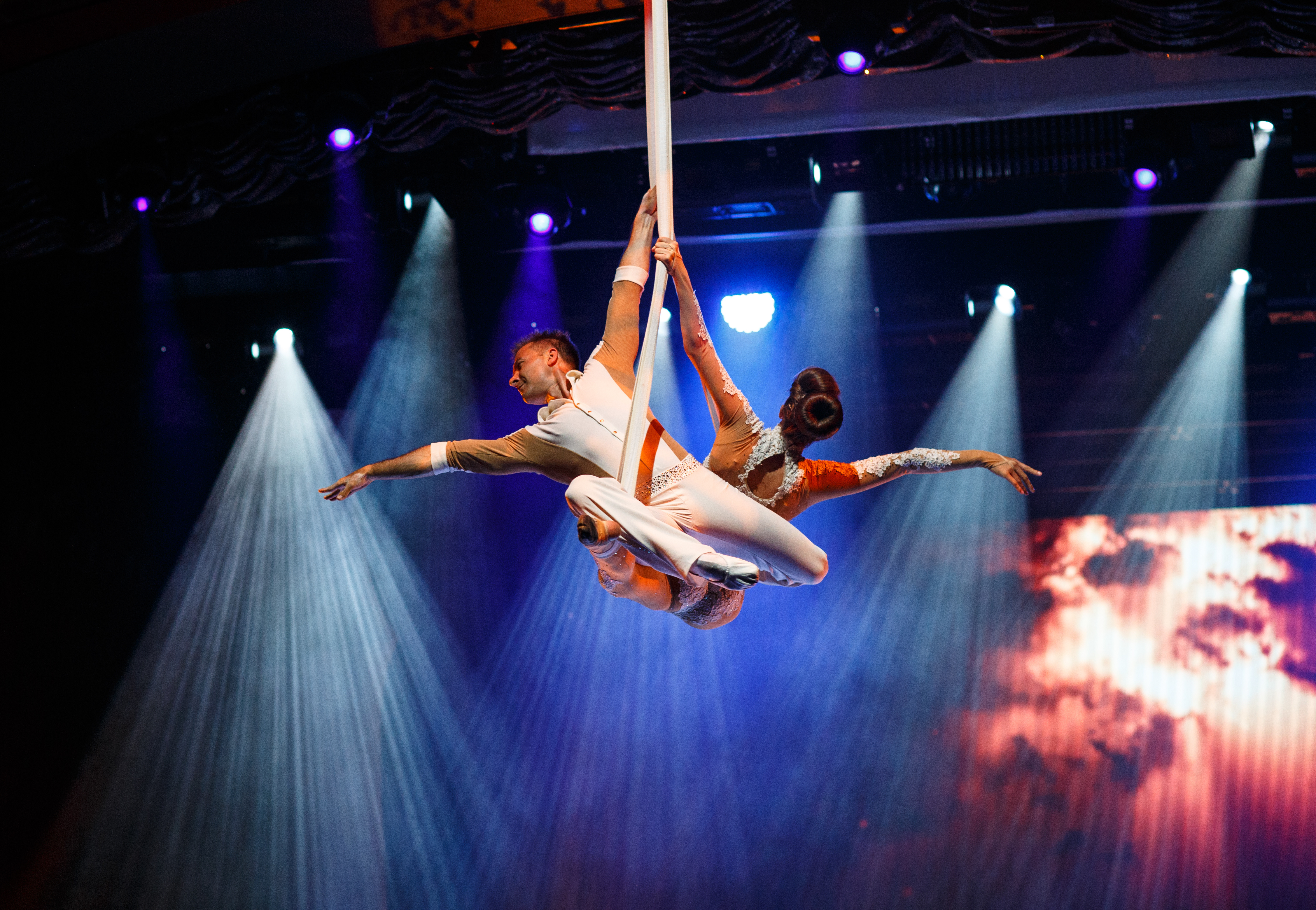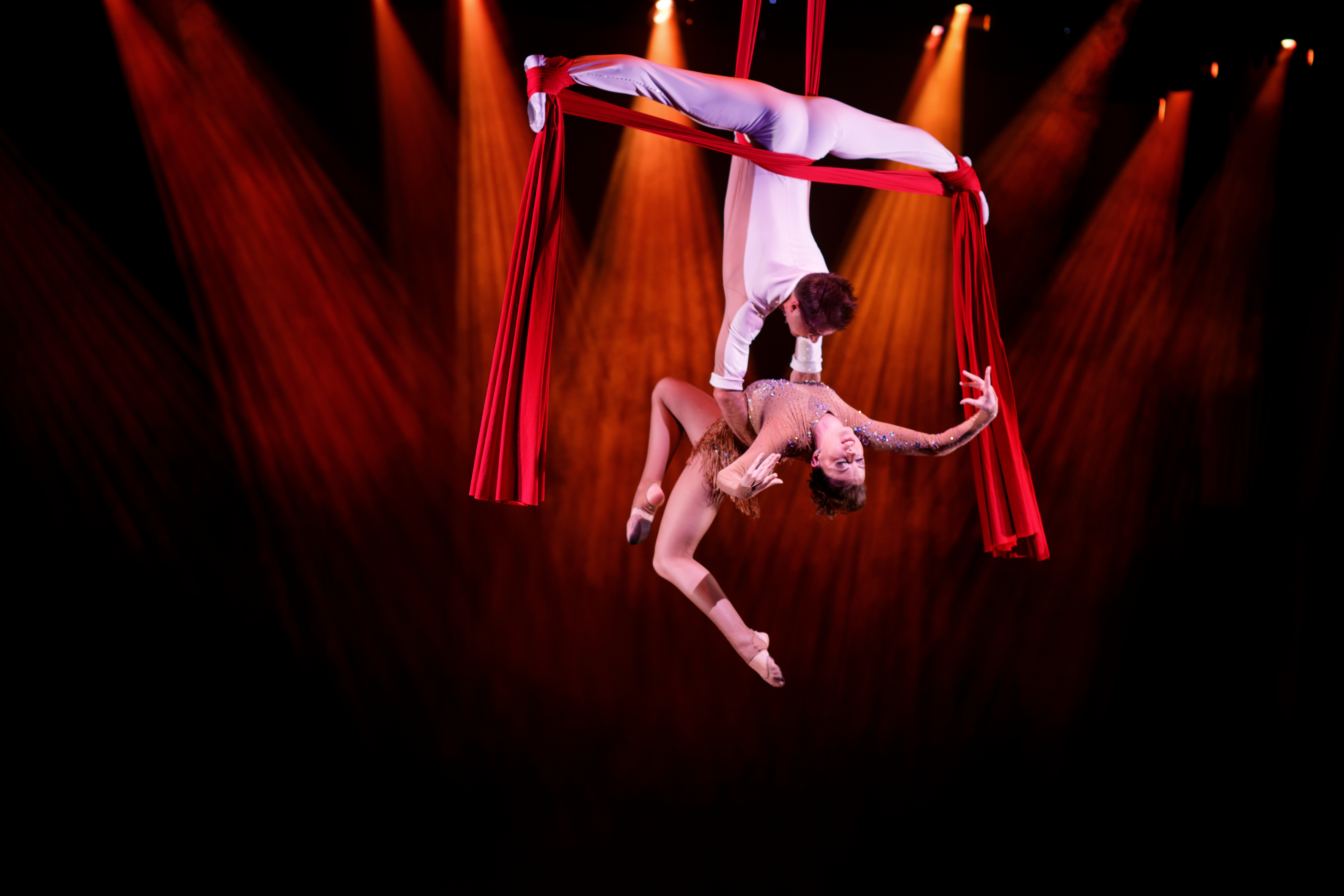Cirque du Soleil is renowned for its breathtaking performances, combining artistry, athleticism, and storytelling to create unparalleled spectacles. But how does this world-class organization find and transform its talent? André Lachance, Senior Director Casting and Artist Contract Management at Cirque du Soleil, shared insights into the fascinating process of talent acquisition and development, where elite athletes transition into Cirque’s dazzling world.
The start and getting diverse talent pools
It began its journey in 1984, born from the vision of Guy Laliberté and inspired by the 450th anniversary of Jacques Cartier’s arrival in Canada. What started as a small troupe touring Quebec quickly revolutionized the concept of the circus. Rejecting the traditional format of animals and rings, Cirque focused instead on theatrical storytelling, extraordinary acrobatics, and a dazzling combination of costumes, lighting, and music. With its name symbolizing the sun, a universal emblem of energy and youth, Cirque du Soleil became a global phenomenon, transforming circus arts into a breathtaking fusion of athleticism, artistry, and innovation.
Cirque du Soleil employs around 1,400 artists, sourced from a variety of backgrounds. According to Lachance, the organization’s talent pool spans traditional circus families, circus school graduates, and retired elite athletes. Traditional circus performers often hail from families with deep-rooted circus traditions, while others attend specialized schools like Montreal’s National Circus School or similar institutions globally.
For athletes, the transition is particularly unique. Individuals from gymnastics, diving, artistic swimming, or tumbling backgrounds often look to Cirque as a way to extend their careers after retiring from competitive sports. This pathway offers them an opportunity to evolve their craft while maintaining a physically active lifestyle.
From athlete to artist
While elite athletes bring immense physical skill and discipline, transitioning to Cirque requires them to adopt an entirely new mindset. As Lachance explained, “In sports, athletes are judged on their technical precision and performance metrics. In Cirque, there are no judges, artists have the creative freedom to express themselves beyond predefined rules.”

This shift in focus, from rigid scoring criteria to limitless creative expression, is challenging yet liberating for many athletes. The artistic dimension is a crucial component of Cirque’s performances, and athletes must learn to embrace theatricality, exaggerate their movements, and connect emotionally with the audience.
Lachance highlighted 3 key differences athletes must adapt to:
- No peak performance cycle: Athletes are accustomed to preparing for specific events, such as the Olympics, where they aim to peak physically, mentally, and technically on a particular day. At Cirque, performers are expected to deliver exceptional performances 350 to 425 times a year. This requires developing sustainability and consistency rather than peaking at specific intervals.
- Emphasis on artistic expression: Unlike sports, where technical execution is paramount, Cirque performers must blend technical precision with emotional storytelling. Artists undergo workshops and exercises designed to push them out of their comfort zones and help them connect with the audience.
- Collaborative environment: Cirque performers must work seamlessly with others, often relying on trust and synchronization to execute complex acts. This demands strong interpersonal skills and a willingness to embrace teamwork.
Talent identification and development
Cirque’s talent acquisition strategy is a carefully orchestrated process involving talent identification, development, and confirmation. Talent scouts attend sports competitions, circus festivals, and other events to identify potential candidates with the necessary technical skills.
However, Lachance emphasized that technical ability alone is not enough. “The only way to confirm a talent is to spend time with them, with the artists” he said. This hands-on approach allows Cirque to assess not only an individual’s skills but also their potential for growth and their fit within the organization’s culture. Personality, adaptability, and the willingness to learn play crucial roles in determining whether someone can successfully transition into Cirque’s demanding environment.
Workshops and training
To bridge the gap between athleticism and artistry, Cirque provides intensive training and support. New recruits participate in workshops that focus on theatrical expression, improvisation, and emotional performance. These sessions encourage athletes to explore their creativity, embrace vulnerability, and develop a stage presence that captivates audiences.
Trainers, artistic coaches, and support teams work closely with performers to ensure they are physically and mentally prepared for the rigors of Cirque’s schedule. Lachance described the process as a collaborative effort, with experts from various disciplines coming together to nurture talent.

Trust lies at the very heart of Cirque du Soleil’s breathtaking performances, weaving its way through every daring act and intricate routine. Nowhere is this trust more vital than in the relationship between performers and their translators, which could be the creative directors, coaches, and choreographers who help transform raw talent into seamless artistry. These translators bridge the gap between vision and execution, ensuring each performer understands and embodies the story being told. They act as interpreters of emotion and precision, fostering an environment where acrobats can push boundaries.
A legacy of excellence
Cirque du Soleil’s success lies in its ability to seamlessly merge athleticism and artistry, creating performances that are as technically impressive as they are emotionally moving. The organization’s meticulous talent acquisition and development process ensures that every artist embodies the spirit of Cirque, an alchemy of skill, passion, and creativity.
As Lachance put it, “Cirque du Soleil offers athletes the chance to continue their journey, but in a way that transcends the boundaries of sport. Here, they become storytellers, creators, and performers who inspire audiences around the world.”
In a world where physical prowess meets artistic expression, Cirque du Soleil continues to redefine the possibilities of human performance. Through its innovative approach to talent acquisition, it transforms elite athletes into stars who shine brightly under the big top, captivating audiences.
Andre Lechance’s book: Team Chemistry: 30 Elements for Coaches to Foster Cohesion, Strengthen Communication Skills, and Create a Healthy Sport Culture
To continue this conversation, we invite your to listen to our podcast episode with Dr. Joe Baker or read the highlights from Beyond the Stats: Understanding Sleeper Athletes.